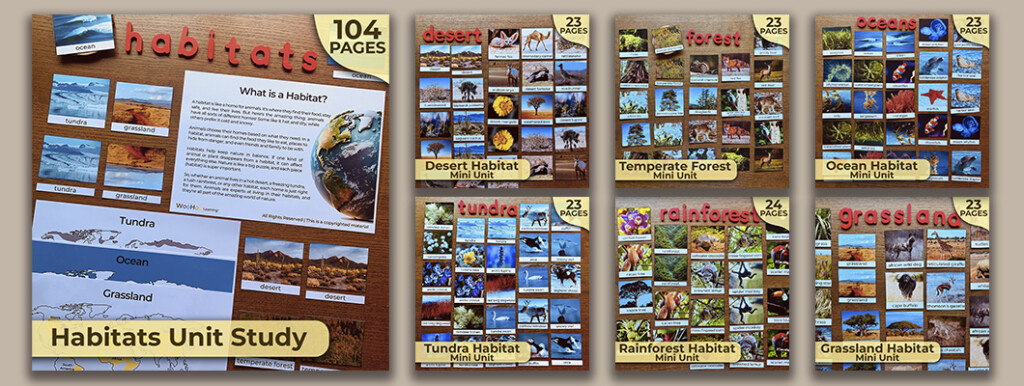The wonderful world of habitats is something fascinating for children, and we should not miss this opportunity. Building on their motivation, we can teach them amazing things about the different ecosystems and biomes of the world. They can learn interesting facts about different animals, vegetation characteristics they didn’t know about, and much more. For all these reasons, and because of the importance of learning about nature, I have created a Montessori study unit on the habitats of the world.
If you, like me, are passionate about the Montessori methodology, its approach to teaching, and its learning environment, you’ll love working with my habitats unit study. The way I use my units with my students is very experiential—I bring real objects into the classroom so they can touch, observe, and explore them. This approach, which focuses on the child, encourages learning through experimentation and discovery. Next, I’ll explain how to use this unit with your students.
"At some given moment it happens that the child becomes deeply interested in a piece of work; we see it in the expression on his face, his intense concentration, the devotion to the exercise"
The Discovery of the Child, Maria Montessori
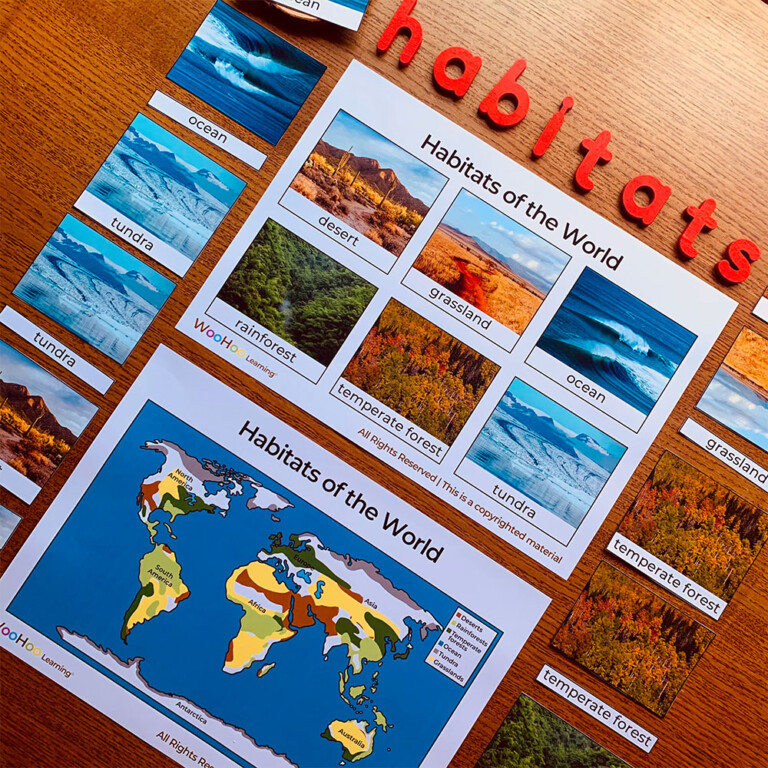
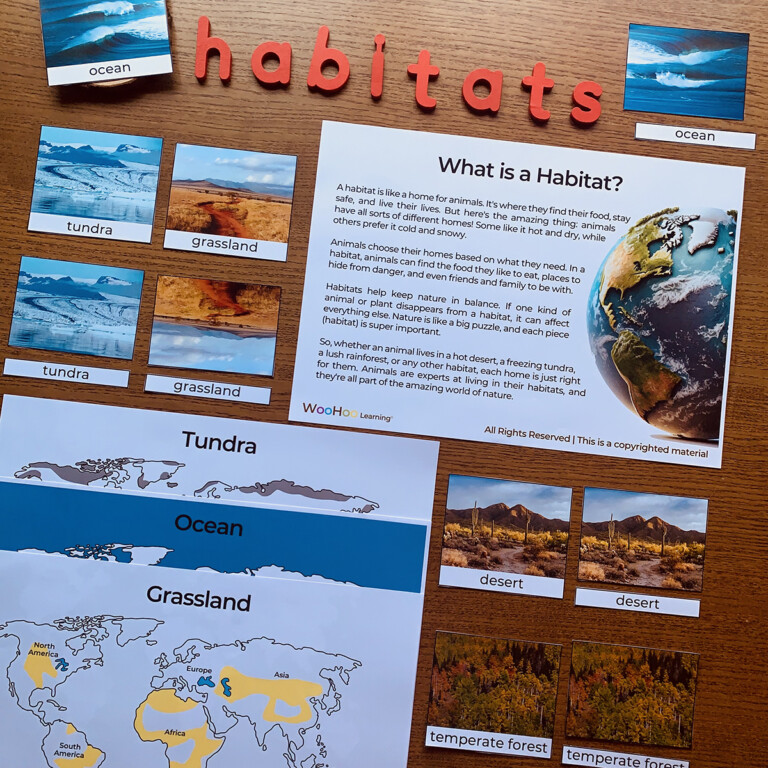
I personally like to start by teaching my students about the desert habitat. An important reason to start with the desert is that in the US, we have amazing deserts like the incredible Mojave Desert. Additionally, it has many animals that spark curiosity and interest in students. In my unit study, you’ll find a desert map, information about the world’s most important deserts (like the Sahara or Atacama), details about their formation, and much more. You’ll also find information about the animals and vegetation, as well as Montessori-inspired three-part cards for each of the animals and plants.
To accompany my units, I always use my safari figurines, which are great for creating sensory trays and learning about the different animals.
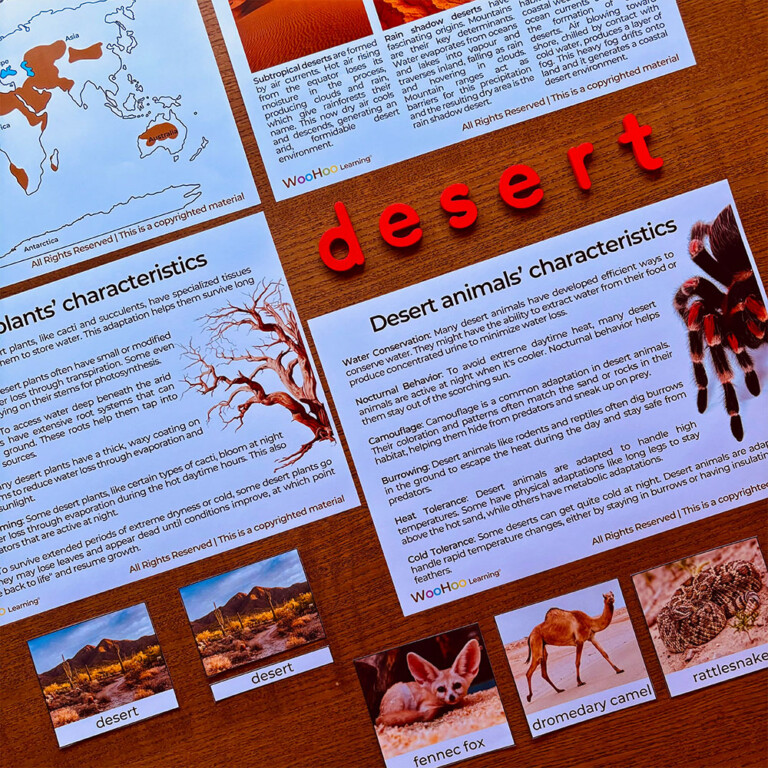
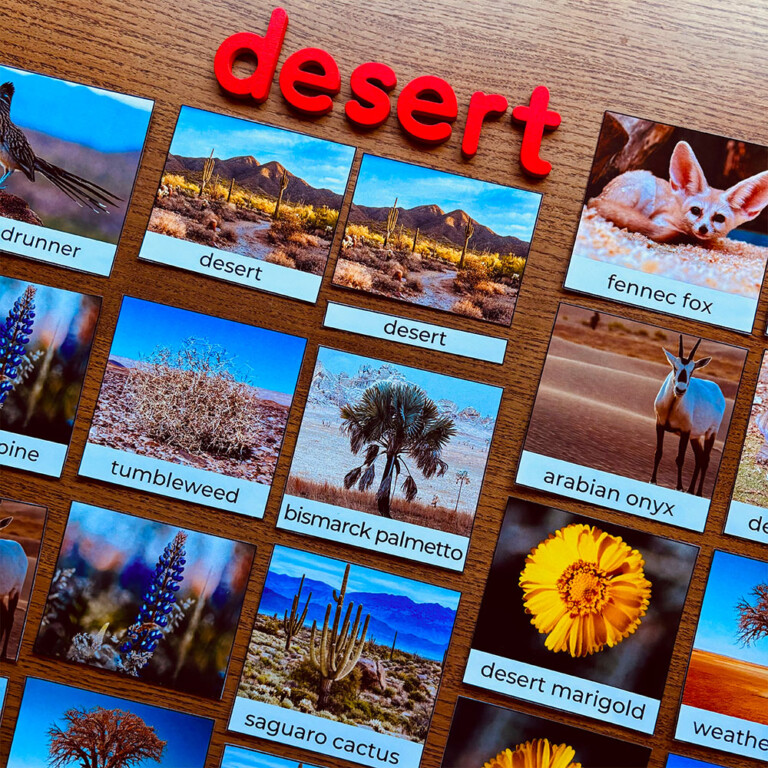
After learning about the desert, I personally like to proceed by teaching my students about the grassland habitat because we have many wonderful grasslands in the US. Additionally, it can promote peer knowledge sharing, as many of my students may have visited grasslands before and can share useful information with their classmates.
To learn about grassland animals, I got this collection of safari animals figurines, which I loved because of their size and because they include mother animals along with baby animals. This way, I’ve also used it to provide important information about parenting in the animal kingdom for animals that live in this habitat.
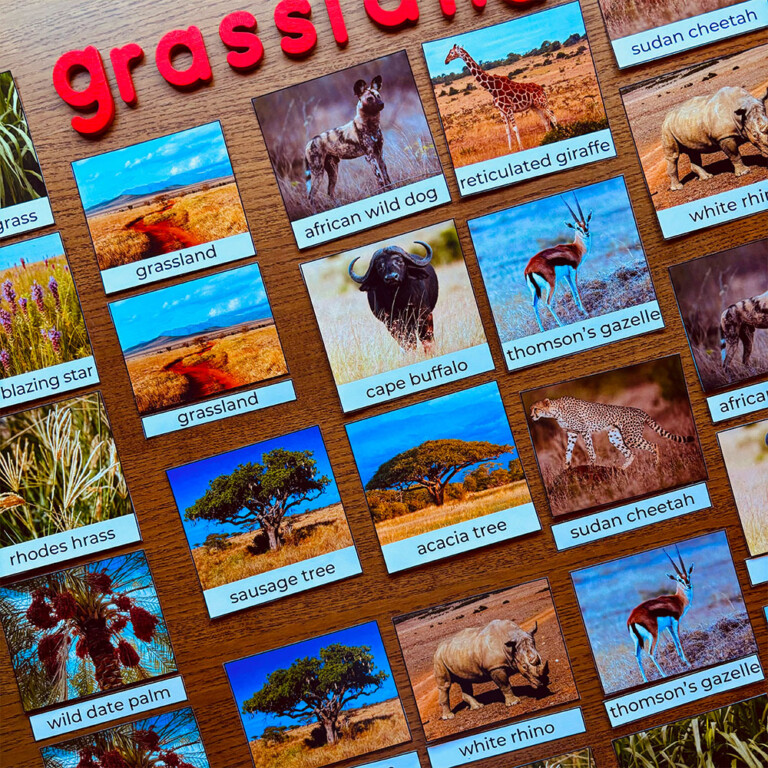
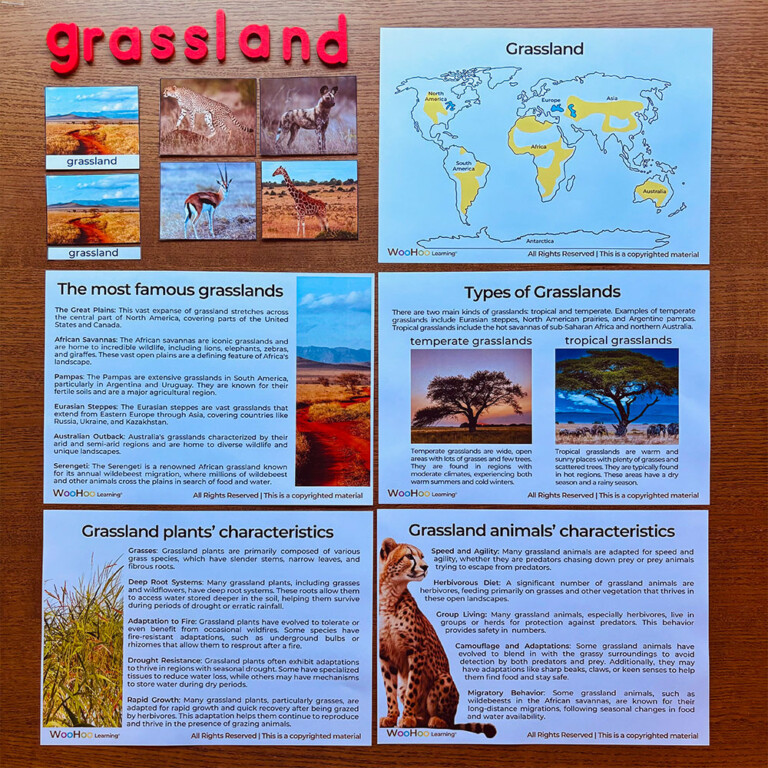
Next, I like to teach the two types of forests together: temperate forest and rainforest. I enjoy comparing maps of where each is located, observing their similarities and differences, and, above all, having the students themselves discover these habitats and be able to identify the characteristics of each, as well as their differences.
This part of the unit is exciting because, on one hand, they explore what they already know and have around them: the temperate forest, and on the other hand, they get to explore and know about exotic animals that live far away and spark their curiosity, like the toucan, sloth, or monkey.
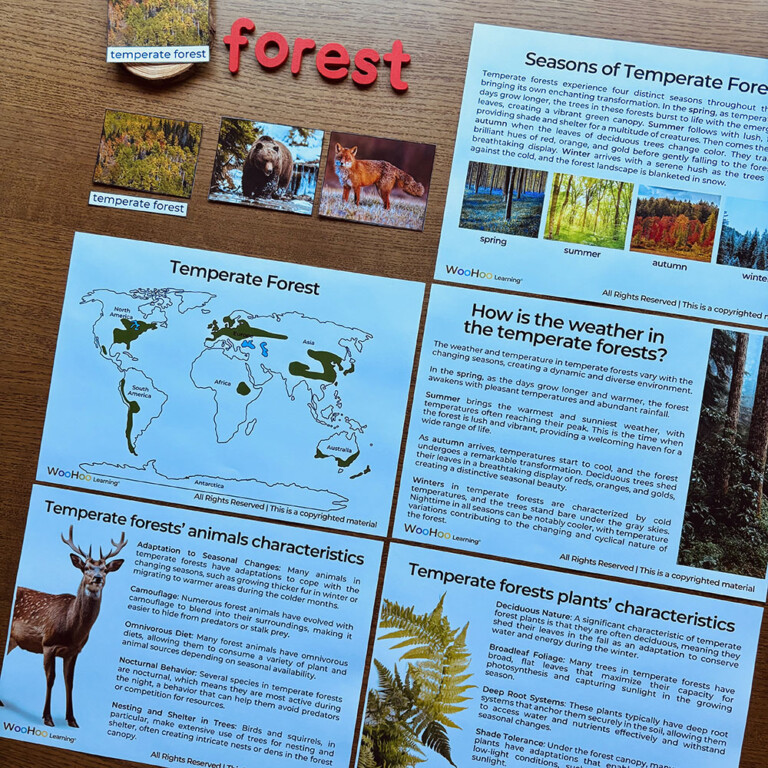
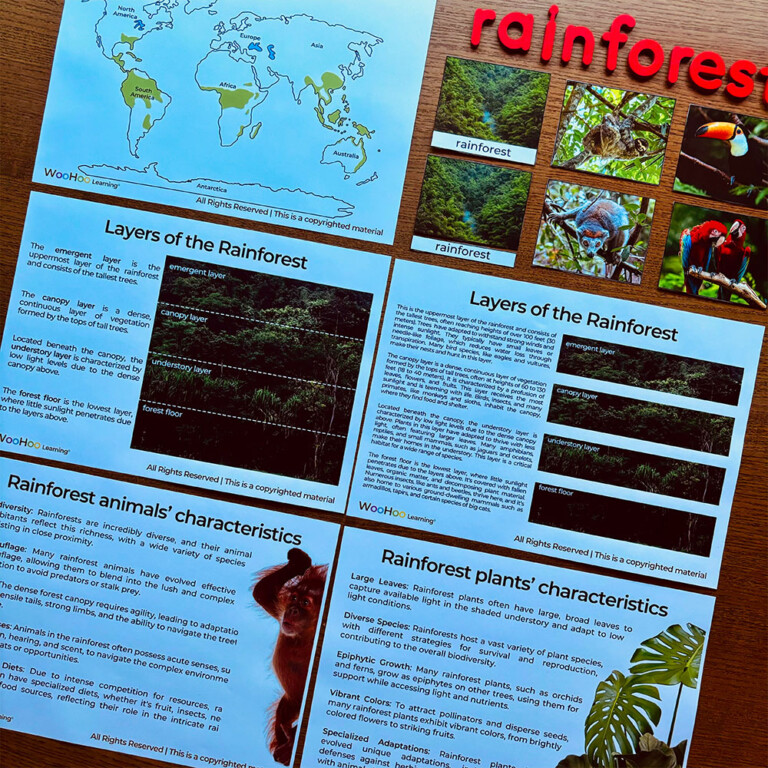
The tundra habitat is, without a doubt, a guaranteed success among my students. The white landscapes, freezing climates, and incredible wild animals spark a high level of curiosity and motivation in equal parts. When we learn about the tundra, we dedicate a lot of time to it and learn a lot because the students just keep wanting to know more and more.
Additionally, there’s usually one animal in particular that all my students agree on wanting to learn more about: the wonderful penguin. That’s why I often complement this unit with my penguin unit, and we learn information about their parenting, life cycle, anatomy, etc.
To accompany my units, I use my polar animals figurines, which are great for creating sensory trays and learning about the different animals.
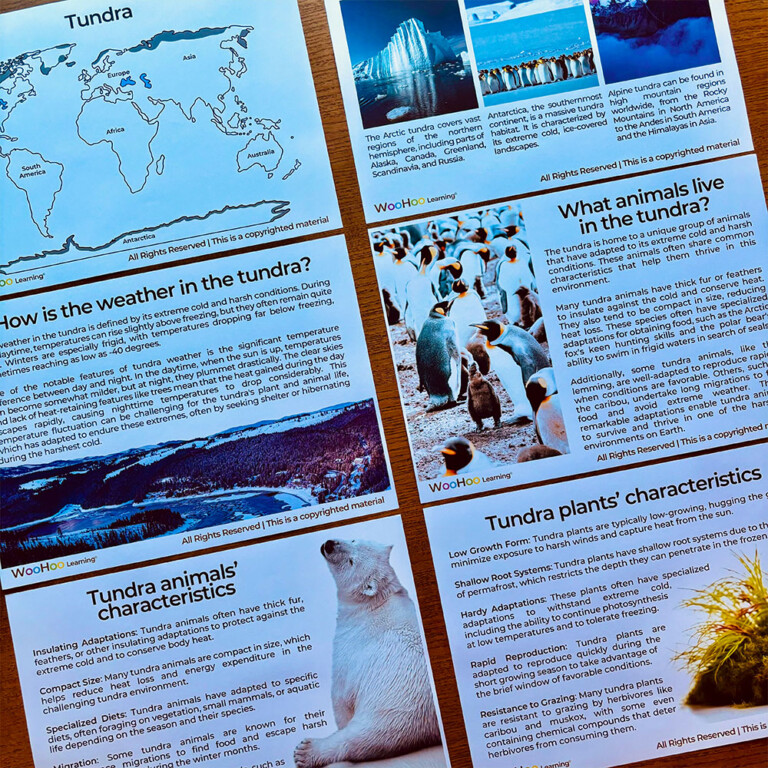
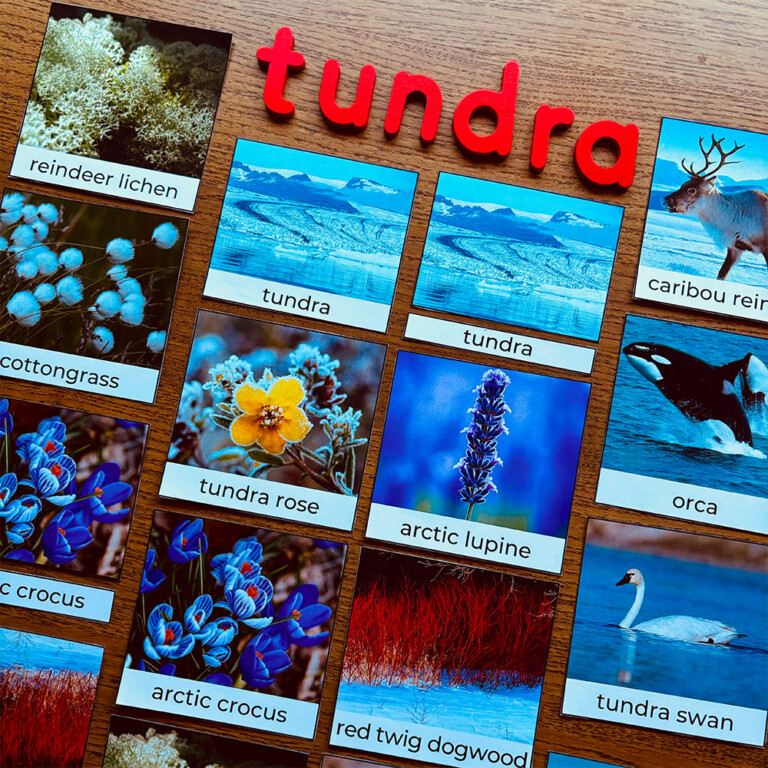
I like to teach the ocean habitat last because it’s not too intense, and they’re familiar with the beach, sea, and ocean, so it’s easy to hold their attention in class. I enjoy teaching this habitat in a relaxed way, letting the students guide the learning process. Since they already know a lot about habitats in general, they will decide what they want to learn about the oceans. If they want to learn more about animals, we’ll focus on that, and if they prefer to explore different oceans, look at maps, globes, etc., we’ll focus on that.
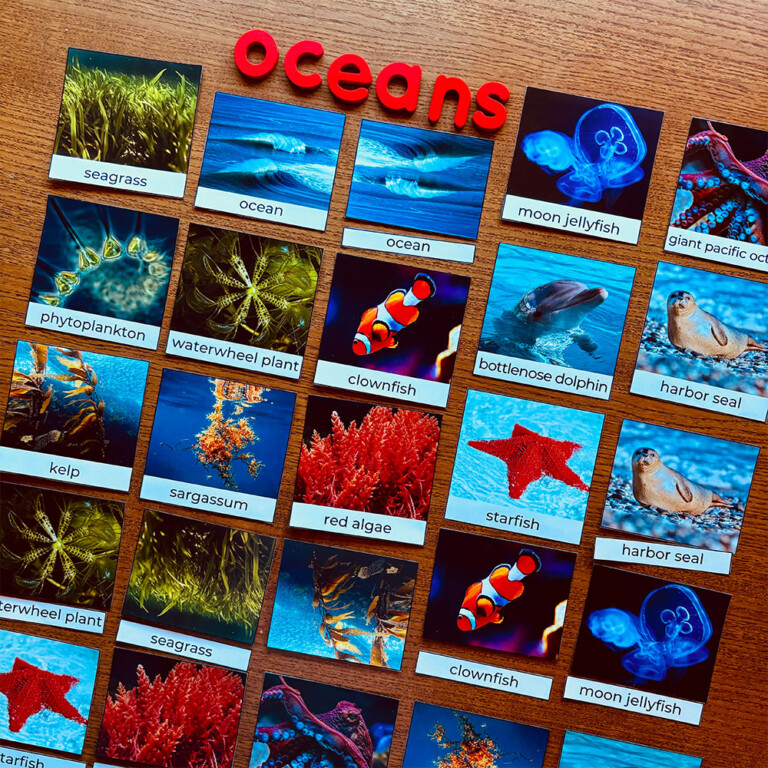
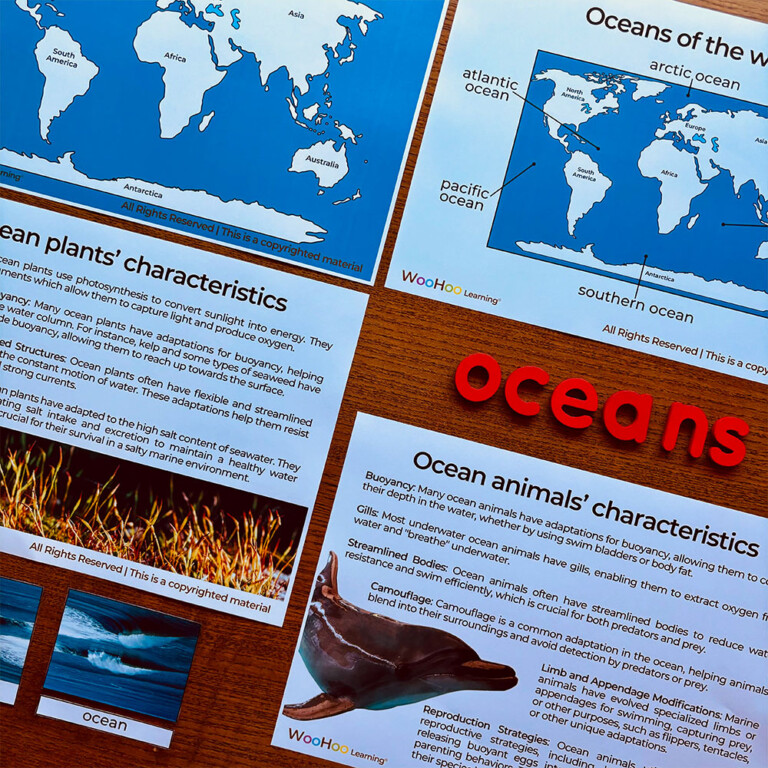
If you’re interested in purchasing my habitats unit study, you can find direct access to it below. If you only want a part of the unit, don’t worry, that’s also possible. In total, there are 7 different units available: the complete habitats unit, the desert unit, the grassland unit, the rainforest unit, the temperate forest unit, the tundra unit, and the ocean unit.
*If you feel more comfortable making your purchase on well-known platforms, you can also find my products on other e-commerce sites. Here are the links to my Etsy store and my Teachers Pay Teachers store.



